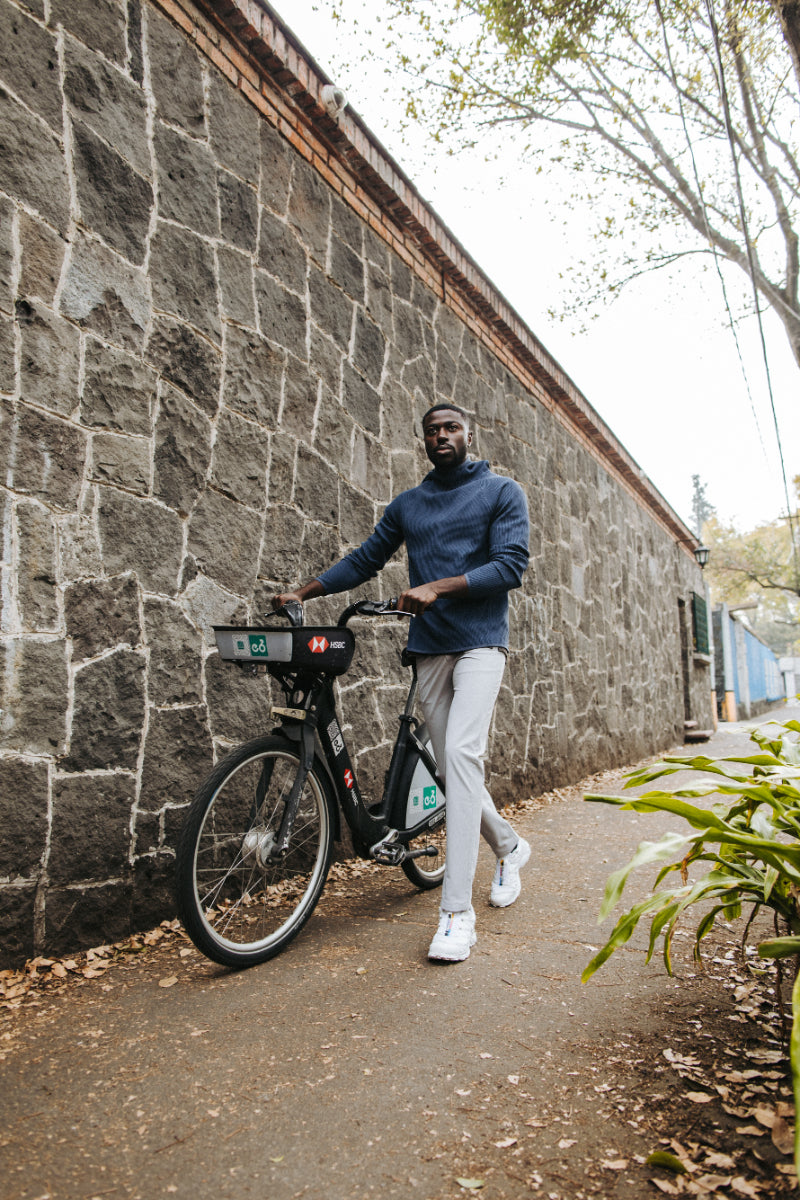Is there such a thing as the perfect sustainable adventure? We like to think it’s a blend of mindful choices, unforgettable experiences, and a little bit of creativity. Whether it’s biking through scenic mountain trails or packing a reusable water bottle for a beachside escape, we’re all about exploring the world while leaving a lighter footprint.

Travel Impact on Nature in Numbers
Sustainable travel began gaining momentum in the 1980s, as concerns about mass tourism's environmental and social impact grew. The numbers speak for themselves—global tourism is responsible for nearly 8% of carbon emissions, with air travel alone accounting for about 2.4% of all CO2 emissions according to a study published in Nature Climate Change. Additionally, traditional tourism often leads to overcrowding in natural areas, contributing to habitat destruction, water shortages, and excessive waste, as highlighted by the UN World Tourism Organization.
At its core, sustainable travel is about finding that sweet spot where our wanderlust meets responsibility. The pros are clear: we help protect the environments and cultures that make travel so special, and we get the rewarding feeling of knowing we’re doing our part. For instance, sustainable travel practices such as choosing direct flights or using alternative transport can cut travel-related emissions by as much as 50%, according to research by the International Council on Clean Transportation.
Of course, it can sometimes be pricier or require more planning to find truly sustainable options, especially in remote locations. But the impact is worth it. Sustainable travel ensures that the breathtaking places we explore today will still be around for future generations to enjoy. Now, let’s look into the actions you can take to make your trips more sustainable and impactful.

What Does Travel Sustainable Mean and How to Start It?
So, what exactly does it mean to travel sustainably? At its heart, sustainable travel is about making choices that protect the environment, respect local cultures, and benefit the communities we visit. It’s not just about ticking off destinations—it’s about leaving a positive impact wherever we go. Here are a few of the ways we might approach sustainable travel:
Minimize Your Carbon Footprint
Whether it’s flying directly, taking public transportation, or simply walking more, reducing emissions is key. We’ve found that exploring cities on foot not only cuts down our footprint but lets us discover hidden gems we’d otherwise miss.
Support Local Businesses
From staying in locally-owned hotels to eating at neighborhood cafes, supporting local economies is a huge part of sustainable travel. Plus, it always leads to more authentic experiences—like the time we stumbled into a family-run restaurant in a small village and had the best homemade meal of our trip.

Choose Eco-Friendly Accommodations
Look for hotels or stays that are committed to green practices, like using renewable energy or offering recycling programs. One of our favorite eco-friendly spots even had a rainwater collection system—it was as impressive as it was inspiring.
Pack and Wear Eco-Friendly Gear
Sustainable travel starts before we even leave home. Opting for clothing made from organic or recycled materials, and packing light, reduces our impact. We love wearing eco-friendly brands that focus on durability and minimal environmental impact—like that trusty jacket that’s been on more adventures than we can count. It’s about quality over quantity, and the right gear goes a long way.
Respect Wildlife and Nature
Stick to designated trails, avoid single-use plastics, and never engage in wildlife tourism that harms animals. We’ve learned that the most magical experiences come from observing nature quietly, rather than disrupting it.

Educate Yourself and Others
Understanding the culture, traditions, and environmental challenges of the places we visit allows us to be more respectful travelers. Every trip becomes a learning experience—sometimes in ways we didn’t expect.
Ultimately, sustainable travel means exploring the world while helping preserve it, so that future generations can enjoy the same beauty we do today. Each small choice adds up, and before you know it, you’ll be traveling in a way that’s both fulfilling and kind to the planet.
How to Pack Light in a Low-Impactful Way
Packing sustainably is all about making intentional choices that keep both the planet and our travels in mind. Over the years, we’ve swapped out a lot of our old travel gear for eco-friendly alternatives, and honestly, it’s made a world of difference. Here’s a list of must-have sustainable travel gear and clothing that we take while traveling:
- Eco-Friendly Clothing: Packing sustainable clothing doesn’t have to be complicated. With a little planning and the right choices, you can reduce your environmental impact. At Western Rise, we’re committed to sustainability in every step—from eco-friendly materials to producing durable, versatile pieces that help you pack light and travel responsibly, without compromising on performance or style. Try incorporating the following tips into your clothing packing, and you’ll notice the difference:
- Pack Versatile Items: Choose multi-purpose clothing that can be mixed and matched, with neutral colors and layering options to reduce luggage weight. Our Venture Waffle Fabric, made with partially recycled yarn, is perfect for sustainable activewear, featured in our Hoodie, Zip Hoodie, and Crew Sweater from the Venture collection.

- Opt for Durable Fabrics: Look for sustainable materials like cotton, merino wool, hemp, and recycled nylon or polyester. These fabrics are built to last through multiple adventures. Our AT Cloth, used in AT Pants, is a durable nylon blend with stretch and Bluesign® approval, ensuring eco-friendly production and long-lasting wear.

- Opt for Odor-Resistant Fabrics: Choose clothes made from odor-resistant fabrics, like merino wool or cotton with advanced technology. Our cotton henley, made from X Cotton fabric with silver ionic technology, resists odors for days, allowing you to wear it longer between washes—perfect for minimizing laundry while traveling.

- Choose Wrinkle-Resistant Fabrics: Sustainable fabrics like merino wool and certain cotton blends resist wrinkling, meaning you can pack less and still look fresh without needing ironing or heavy-duty steaming. Our Western Rise Merino Wool Button Down and Polo are perfect examples—offering a polished look while remaining lightweight, wrinkle-resistant, and ideal for eco-friendly travel.

- Do Laundry on the Go: Instead of packing excess clothing, plan to do laundry during your trip. Packing fewer items and doing laundry on the road reduces the amount of clothing you need to bring, and hand-washing in eco-friendly detergent is an easy, water-saving solution to refresh your wardrobe.
- Reusable Water Bottle: Ditch single-use plastics and keep hydrated with a reusable water bottle. Many models come with built-in filters, perfect for any destination.
- Solid Toiletries: Solid shampoo bars, conditioner bars, and soap bars are plastic-free, travel-friendly, and take up less space in your bag.
- Travel Utensils: A reusable cutlery set made of bamboo or stainless steel helps avoid the need for disposable plastic utensils while eating on the go.
- Reusable Shopping Bags: Lightweight, foldable tote bags are perfect for carrying groceries, souvenirs, or anything else you pick up along the way.
- Solar-Powered Charger: A portable solar-powered charger keeps your devices running while reducing your reliance on electricity.
- Collapsible Coffee Cup: For those coffee stops, bring a collapsible, reusable coffee cup to reduce the need for disposable cups.
- Recycled or Biodegradable Travel Towels: Quick-drying towels made from recycled materials or biodegradable fibers are compact and eco-friendly.
Sustainable Travel Destination Ideas
The type of destination you choose can make a big difference. Opting for nature-focused adventures is a great way to travel responsibly while connecting with the environment:
Mountains travel
Mountain getaways offer fresh air and a chance to immerse yourself in nature. Choose destinations with well-maintained hiking trails to minimize your impact, and consider staying in eco-lodges that use renewable energy. For example, the Swiss Alps are home to several sustainable hotels like Whitepod, which runs on renewable energy and offers low-impact, nature-based activities.

Forests Retreats
Forest retreats are perfect for sustainable travel when staying at eco-friendly cabins or treehouses that blend into the natural environment. Look for accommodations that use sustainable building materials and minimize their impact on the surrounding ecosystems. The Black Forest in Germany offers eco-conscious hiking experiences, with several nature lodges certified for sustainability.
Lakes Trip
When traveling to lakes, pick destinations that prioritize water conservation and responsible tourism. Avoid contributing to overcrowding by choosing less-trafficked lakes, and always adhere to local wildlife and environmental guidelines. Lake Bled in Slovenia is a great option, where you can stay at green-certified hotels and enjoy electric boat rides instead of fuel-powered ones.
Desert Adventures
Deserts are fragile ecosystems, and sustainable travel here means choosing destinations that work to conserve water and protect local wildlife. Look for eco-camps that rely on solar power and offer low-impact experiences. Wadi Rum in Jordan has several eco-camps that focus on preserving the desert environment and supporting local Bedouin communities.
Islands Escape
Many islands are focused on preserving marine ecosystems, so choosing destinations with protected reserves or conservation projects is key. Opt for snorkeling or diving tours that promote reef conservation and avoid harming marine life. The Azores in Portugal is an excellent example of a sustainable island destination, offering eco-friendly tours and accommodations committed to preserving their natural beauty.

No matter the destination, choosing places that prioritize sustainability and responsible tourism ensures your adventure leaves a positive mark on the environment.
Getting to the Destination Sustainably
Getting to your destination sustainably can sometimes be tricky, but still, we might find ways to make it as eco-friendly as possible.
- Fly direct and offset emissions: Booking direct flights minimizes emissions for long-distance travel. Offset your carbon footprint through reputable programs to balance the environmental impact.
- Use public transportation, bike, or walk: Once at the destination, choose low-impact options like public transport, biking, or walking to reduce emissions and enjoy the local environment.
- Take trains or buses for shorter distances: For closer destinations, trains and buses offer more efficient, eco-friendly alternatives while providing scenic and relaxed travel experiences.
- Carpool or rent hybrid/electric vehicles: If driving is necessary, carpooling or opting for hybrid or electric vehicles helps reduce the carbon footprint.
- Use ferries or boats: In coastal or island destinations, ferries or boats provide a scenic, low-impact way to reach the destination.
Sustainable travel is all about balance, and while getting there may require, for sure, some emissions, it’s what we do during the trip that really makes the difference.

Choosing Eco-Friendly Accommodations
The next part of each travel is the place to stay and when booking sustainable accommodations, there are a few tips we usually keep in mind when choosing eco-friendly options:
- Opt for Camping: Camping is one of the most sustainable accommodation options, especially if you follow "leave no trace" principles. Look for eco-friendly campgrounds that prioritize conservation, use solar power, or offer composting toilets. If you're more adventurous, wild camping in areas where it’s permitted can be a great way to minimize your footprint while connecting with nature.
- Look for Eco-Certifications: If you prefer more typical accommodation, websites like Booking.com often have filters for eco-certified stays, like Green Key or EarthCheck. These certifications indicate the accommodation meets specific sustainability standards.
- Use Filters on Airbnb: While Airbnb doesn’t have a specific eco-certification filter, you can search for keywords like "eco-friendly," "sustainable," or "off-grid" in the description. Hosts often highlight features like solar power, rainwater collection, or locally sourced materials.
- Check for Energy-Efficient Practices: Whether on a booking site or Airbnb, look for mentions of energy-saving measures, such as solar panels, energy-efficient appliances, or LED lighting. Hosts often include these in the property descriptions if they’re committed to sustainability.
- Read Reviews: Reviews can be a goldmine for discovering how sustainable a place is. Past guests will often mention eco-friendly practices, like recycling programs, water-saving measures, or support for local initiatives.
- Choose Local and Small-Scale: Supporting smaller, locally-owned accommodations often means contributing to the community. Local stays tend to have a lower environmental impact and are more likely to source goods and services sustainably.
- Ask the Host: If you’re unsure about an accommodation’s sustainability efforts, don’t hesitate to reach out to the host and ask. They’ll often be happy to share details about their eco-practices.
By following these tips, it’s easier than ever to find a sustainable place to stay that aligns with your eco-travel goals!

Go-To Sustainable Travel Practices
Once we’re at the destination, practicing sustainability becomes even more important. Here are some simple yet impactful ways we can minimize our footprint and travel mindfully:
Support Local Markets and Restaurants
Eating locally not only supports the community but also reduces the carbon footprint that comes with imported food. We love exploring local markets—there’s nothing like fresh produce and handmade goods to get a real taste of the culture.
Conserve Water and Energy
Be mindful of water use by taking shorter showers and reusing towels.
- Turn off lights, and air conditioning, and unplug devices when leaving your accommodation.
- Declining unnecessary hotel cleaning also helps conserve water and reduce energy usage.
We’ve found that simple habits like these go a long way, especially in regions where resources are scarce.
Use Public Transport or Rent Bikes
Instead of hopping in a taxi, take advantage of public transport, rent a bike, or simply walk. It’s more sustainable and gives you a chance to see more of the local life. We’ve discovered some of our favorite hidden spots by strolling through backstreets and local neighborhoods.
Avoid Over-Touristed Areas
Explore less popular sites or visit during off-peak hours to reduce the strain on crowded destinations. We’ve found that off-the-beaten-path adventures often lead to the most unique and memorable experiences.
Leave No Trace
Stick to marked trails, pack out all trash, and avoid picking plants or disturbing wildlife. We always follow the "leave it better than you found it" rule—it’s a small effort that helps preserve the natural beauty for everyone to enjoy.

Sustainable travel is all about exploring the world responsibly, making choices that protect the environment, and supporting local communities. We believe it's not just about the destination, but how we get there and the impact we leave behind. By packing light, choosing eco-friendly options, and traveling mindfully, we can enjoy the adventure while helping to preserve the places we love for future generations.















